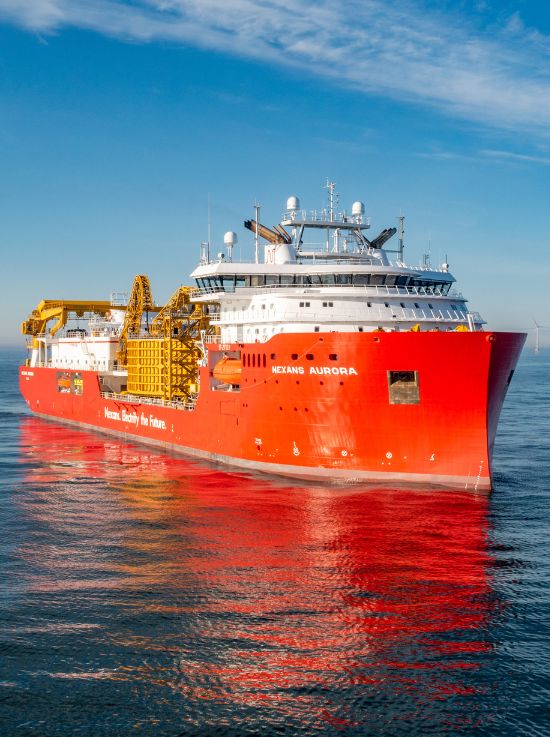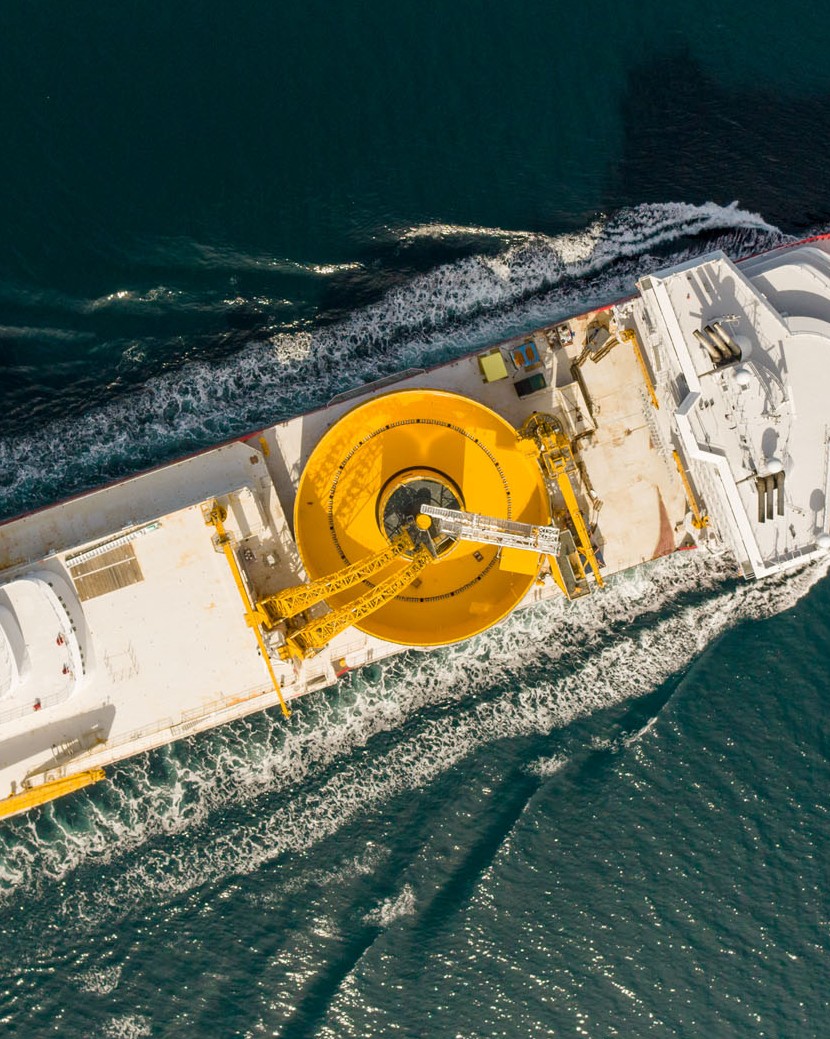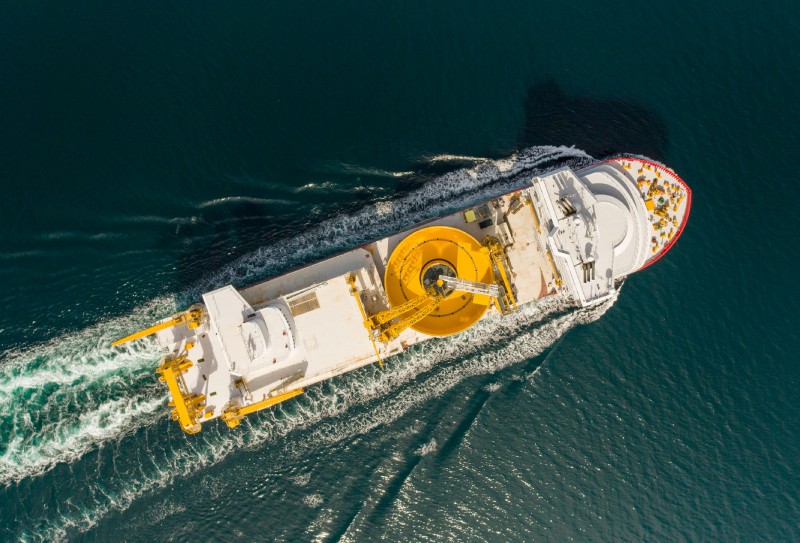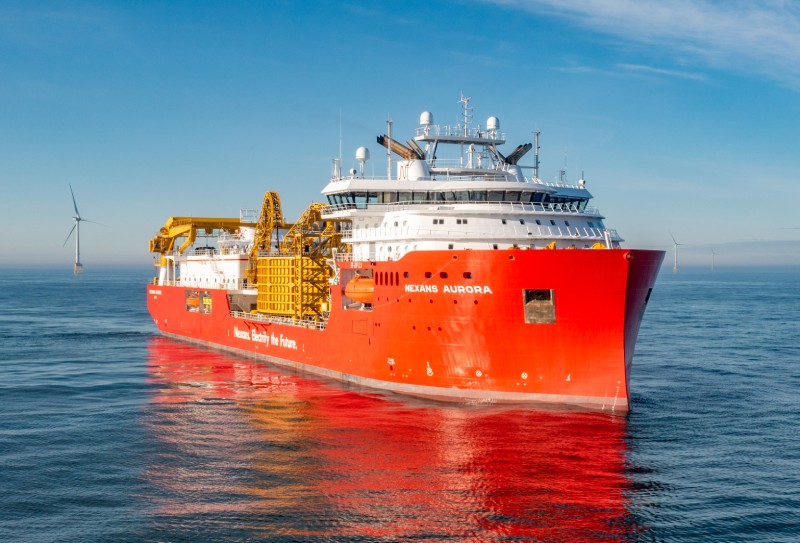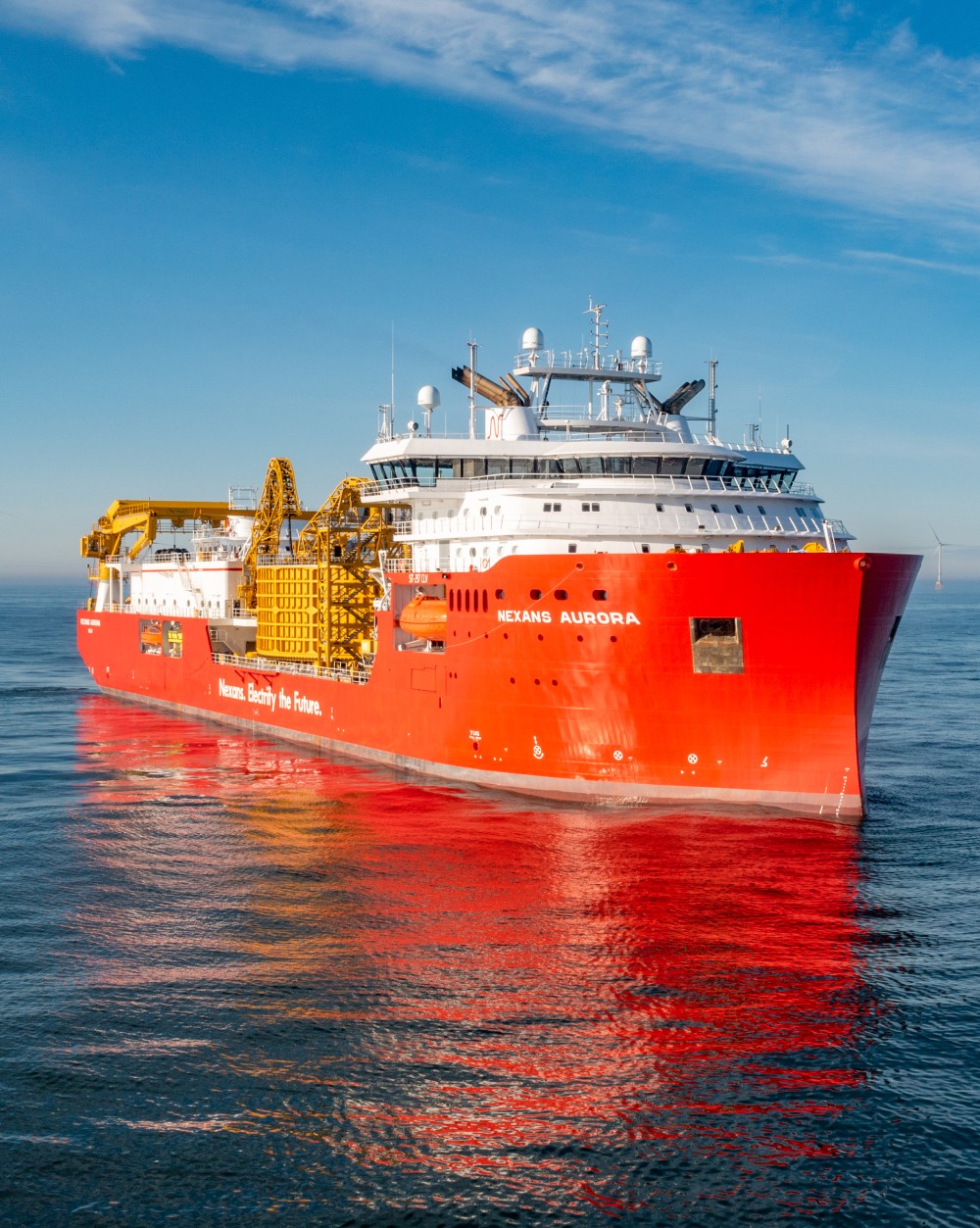Context
In 2022, Nexans has been awarded the contract for the Celtic Interconnector, a groundbreaking project jointly developed by the Irish and French Transmission System Operators, EirGrid and RTE (Réseau de Transport d’Electricité). This project marks a significant milestone as it involves the construction of the world’s longest XLPE interconnector, facilitating direct electricity exchange between France and Ireland for the first time.
Recognized as a Project of Common Interest (PCI) by the European Union, the Celtic Interconnector holds immense importance in the integration of energy systems across Europe. With a capacity of 700 MW, it is poised to supply power to approximately 450,000 homes, contributing significantly to the European energy transition and the achievement of energy policy and climate objectives.
Challenges
The challenges inherent in the Celtic Interconnector project are substantial. Notably, the installation of a 500km subsea cable route, coupled with 40km of underground route in France (Brittany) and 35km in Ireland (Cork County), requires meticulous planning and execution. Additionally, ensuring the highest installation and protection delivery standards poses a significant challenge, especially given the project’s scale and complexity.
Key Figures
700 MW
total capacity
1,000 km
of subsea cables
180 km
of underground cables
Approximately
450K
homes supplied
Nexans implication
Nexans’ involvement in the Celtic Interconnector project is multifaceted and crucial to its success. The company is responsible for manufacturing the cables at its state-of-the-art facilities, including the production of 1,000km of subsea cables in Halden, Norway, and 180km of underground cables in Charleroi, Belgium. The 400 kV HVAC 10km connection to the Irish grid is also part of the project awarded to Nexans. Furthermore, Nexans will manufacture accessories in Cortaillod, Switzerland, and leverage its proven project delivery model and cutting-edge assets, such as the Nexans Aurora Cable Laying Vessel, to ensure the highest installation standards.
A notable aspect of Nexans’ contribution is the implementation of innovative technologies, such as the bundle lay of the two HVDC power cables and a full data capacity repeated fiber optic system. This underscores Nexans’ commitment to pushing the boundaries of technological advancement in the energy sector.
Signing the contract for the Celtic Interconnector further cements Nexans as a major player in renewable energy. We are proud to contribute to such a historic project that works directly with the European Union’s goal of electrical solidarity between Member States. Nexans is leading the way in connecting the parts of the world with the highest renewable energy potential to the parts of the world with the greatest demand for electricity. From energy generation and transmission to distribution and usages, Nexans’ solutions cover the full electrification value chain to ensure electricity can be delivered to all corners of the world securely, reliably, and efficiently.

CEO, Nexans
Expected to be completed and energized by 2026, the Celtic Interconnector represents a significant step forward in Nexans’ journey towards becoming a pure electrification player. By leveraging its expertise and innovative solutions, Nexans is not only advancing the transition to renewable energy but also solidifying its position as a leader in the electrification sector.

Context
In 2020, Nexans has been awarded a significant contract to design, manufacture, and install a 335km subsea high voltage direct current (HVDC) cable system for Ariadne Interconnection S.P.S.A, a subsidiary of IPTO, Greece’s state grid operator. The Crete-Attica interconnection aims to link the electricity network on mainland Greece to Crete, facilitating the transition from fossil fuel generation to renewable wind and solar energy resources. Crete, with a population of around 700,000 people and attracting over 4 million visitors annually, currently relies predominantly on outdated fossil fuel generation. The submarine cable interconnection promises a reliable power supply crucial for Crete’s future prosperity, while also reducing emissions and making the island more attractive to tourists. Additionally, it enables the development of Crete’s own renewable energy resources by facilitating the export of excess generation to the mainland.
Challenges
One of the primary challenges of this project lies in the complexity of installing a subsea HVDC cable spanning 335 km, from the Attica region on the Greek mainland to the Herakleion area in Crete, especially considering water depths reaching up to 1,200 meters. Additionally, the need to ensure the cable’s resilience against environmental factors and potential damages during installation poses a significant challenge. Furthermore, coordinating the manufacturing, transportation, and installation processes within the designated timeframe presents logistical hurdles.
335 km
of subsea HVDC cables
1,200 m
water depth
Nexans implication
Over a 35-month project, the Group played a crucial role throughout the project lifecycle. We provided one 500 megawatt (MW) HVDC subsea cable system to form half of the total 1,000 MW bipolar interconnection.
The Nexans cable, rated at 500,000 Volt, is based on its well-proven mass impregnated nondraining (MIND) design for HVDC cable systems and will integrate fiber optic elements for sensor applications. The near-shore sections of the cable, installed at water depths down to 100 meters, feature an aluminum conductor core with a cross-section of 1,800 mm². The deeper sections of the cable, installed at depths down to 1,200 meters, feature a 1,500 mm² cross-section aluminum conductor. The HVDC cable was manufactured in the Nexans plant in Halden, Norway.
In terms of installation, Nexans deployed one of its dedicated cable vessels, Nexans Aurora, to lay the cable along the designated route. To project the cable and ensure its secure positioning down to 600 meters water depth, we deployed the Nexans Capjet water jetting system, specialized trenching equipment.


